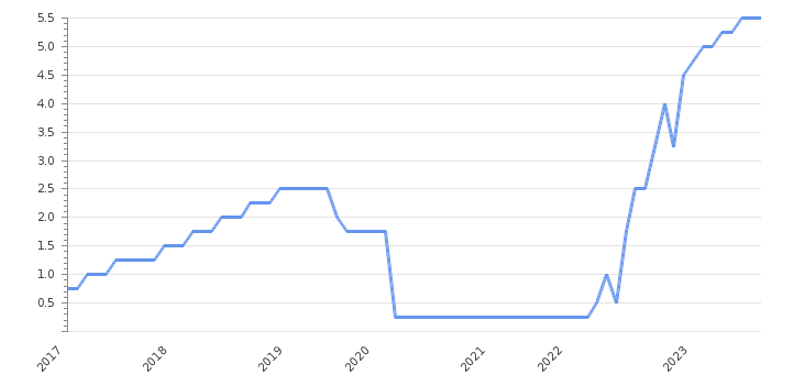There’s a whisper and scream campaign happening right now in Denver. The screams are in the headlines and quotes of nearly every newspaper article touching on [the purported end of] apartment production in Denver. Like these:
The whispers are in the ears of elected officials and city leaders, attempting to plead the case for a repeal or dramatic reduction in affordability requirements in new development, because those requirements are the barrier to housing permitting. Which has “stopped.”
What’s an earnest but outside observer to believe?
Well, of course I wrote a paper to explain it all: The Promise of Inclusionary Housing: A Case Study Putting Denver’s Early Implementation Into Context.
I’m not going to go into the details of Denver’s Expanding Housing Affordability inclusionary affordability ordinance here, but I do in the full paper. And lucky for us, City Council took a deep dive just a few weeks ago here. Or watch the short video my Council office made in 2022. Short story: it requires 8-15% affordability for families earning between 60 and 80% of AMI in new rental and for-sale housing developments of 10 homes or more.
Why Ice Cream Cones Don’t Cause Murders
Before I channel my inner economist for you, let’s clarify one of my two favorite mantras in life and policy-making that you’ll need to follow along: correlation is not causation.
I remember less than I’d like to admit from Drake University in Des Moines, IA in the 90s, but this nugget from my Soc 101 class stuck:
Ice cream cone sales go up in the summer and so does the murder rate. These two things are correlated. They rise and fall together. But even a fourth grader knows that ice cream cones don’t cause murders.
There’s a deeper, independent causal factor behind murders, that may or may not be the same causal factor behind ice cream sales. Heat? Long days? More social interaction and parties? You need evidence and data to prove causation. And typically a control group: Maybe a lactose intolerant city with no ice cream? If they didn’t have any murders, well then you’d be well on your way to proving that ice cream is in fact a killer after all.
But it isn’t always so obvious, is it? Which may be one reason why you subscribe here.
What’s Happening with Apartment Permitting in Denver
It’s down. It’s true.
But this brings us to my second Robin Mantra: paradoxes are cool. Two things that seem to be in conflict can both be true.
Let’s put my mantras together and summarize all the data on the early implementation of inclusionary housing in Denver, in context:
It can be true that multi-family permitting is down in Denver since affordability
requirements for new development kicked in. AND it can be true that other causal factors are at play, such as higher interest
rates and construction pricing, and a supply glut in the city. AND it can be true that apartment development continues and will continue to occur in Denver at a healthy pace for the economy we're in.
Let Me Back That Up
Here’s what the real estate industry likes to focus on with permitting in Denver:
A close up of permit data from the City planning department, the month before and the month after the ordinance went into effect June 30, 2022.
Holy shit, right?! Yeah, but let’s zoom out and see what really happened.
What’s behind that blue spike? A rush to get permits in the door before the ordinance went into effect, at the tail end of the largest boom in apartment permitting in the city’s modern history. And, not incidentally, the tail end of a national boom in urban multi-family permitting too.
Development potential in any city is limited by a range of market factors: land, construction workforce, lending capacity. When all of those are tied up in an unprecedented construction boom and an unprecedented permitting spike, yeah, well, it’s going to take a while to eat the elephant, as our prior planning director used to say.
Or, in my words:
The claim apartment construction is over in Denver is like comparing the grocery bill and calorie intake of a Super Bowl Sunday binge with grocery purchases and calorie intake for the three days after. And then declaring that the family must be starving because of the precipitous drop. Skipping breakfast and eating leftovers and salad for a few days after a once-a-year feast is just a return to normal before you head to the grocery store again, for a more typical cart of food.
What Causal Factors Are Slowing Permitting
While Denver’s permitting hasn’t stopped, we also aren’t yet returning to the same size shopping cart from right before the blue spike either. Why?
Well, for starters it isn’t the same economy.
Here’s what Fed interest rates look like right before and after Denver’s affordability policy went into effect in mid-2022.
And here’s what construction pricing looks like according to Mortenson. Another spike the year the policy went into effect, staying at that level ever since.
Denver is part of a national trend in declining housing permits being talked about by every industry source I can find—except our local whispering class of course—like this one. An economist involved in the Denver Regional Council of Government’s Regional Housing Needs Assessment and who presented at a recent Up for Growth Pro-Housing Forum, Dr. Michael Wilkerson, summarized the situation this way:
“Housing production is down nationally. 2022 was peak permitting in every place in the county.”
But Wait, What About Aurora?!
They say. “Where permits are up!” Well, first, it’s hard to know, because the industry comparisons often cherry pick certain close-up, quarter to quarter comparisons rather than the multi-year looks I’m giving you here. And, I do have a day job, so I couldn’t pull all the original data. BUT, let’s assume it’s true across entire years for the sake of argument.
And let’s review how control and treatment groups work to prove causation.
Ideally the two comparators are identical in every way other than the factor being tested, in this case an affordable housing requirement on new development. I love Aurora, I do. But identical, it is not. Starting with the price of land. But more importantly, there’s another national trend underway. Which is investors and developers moving from core cities that saw huge gluts of supply and stagnating or slowing rent growth, toward suburbs where rents are growing faster and there’s more untapped potential. Don’t believe me, ask those crazy liberals at Freddie Mac all about it.
Second, all the similarly situated cities would be the same. So, for example, if inclusionary was the main or primary factor driving multi-family development locational decisions, then surely permitting would be up in all the places without inclusionary.
Oops. It’s not in Lakewood, where there’s no inclusionary ordinance. It had a peak and then a decline, just like Denver.
And housing development would surely be down in all the places with inclusionary policies. Especially, say, jurisdictions with the highest requirements in the state of Colorado, right?
Oops again. According to the industry’s own analysis, because hey, they get paid to do it and I don’t anymore, permits are up in Boulder County. Home to no less than four inclusionary policies, including the notoriously highest requirement in the state, around 25% of all new units in the City of Boulder.
Hmm. My Soc professor would say this flunks a basic causal control group analysis.
For Anyone Reading this Getting Angry
I say something really important in the paper, and I’ll repeat it here. Slowly.
None of this is to say that it doesn’t cost more to take lower rents or sale prices on 8-15% of the apartments or condos or townhomes in a development. There’s a real cost.
None of this is to say that that cost is easy to absorb. In fact, on top of all the other costs housing is facing, it makes sense that it would objectively be harder to build in affordability right now than it was, say, when interest rates were lower.
And finally, when “they” say that this is a factor in them choosing not to develop in Denver, then I believe that is true too. For them.
Just add all these to your paradox tracker.
But someone else is still rezoning properties into multi-family zone districts here at great cost (40 such rezonings after the ordinance passed).
And someone else is still opening new multi-family permits, to the tune of 265 new projects submitted in the 24 months after the ordinance passed alone, a pace that planning staff said was inching up faster in the last half of 2024, beyond my data set.
And some 40,000 additional homes are in various stages of planning and permitting across just five major redevelopments alone (think the new Kroenke plans at Ball Arena etc).
So please, let’s let go of the patently untrue language, used as recently as Monday (!), that apartment permitting has “stopped” in Denver. We’re just going to have to use the L-word if you keep doing it. Since it’s really, really easy to disprove and you keep saying it anyway.
Closing it Out
According to national standards, it’s far too early to evaluate the outcomes of Denver’s inclusionary affordability policy because it isn’t fully implemented yet. There were still 20-30,000 grandfathered projects without affordability requirements still working their way through permitting last year. (Another factor likely slowing new permits, unrelated to the underlying affordability requirements themselves. But I can’t keep going, gotta stop, right?)
In some ways I regret spending all this time on the facts. Because this really comes down to a question of values. If all the things above are true, including that there are some costs and some developers will choose to build less here and that could have a small impact on the speed of new supply, why have an inclusionary affordability policy?
Because it’s worth it. The immediate affordability of restricted price apartments and homes is more valuable based on the need in our city right now than the benefits of slightly faster, market rate (aka luxury priced) housing.
If you agree, you might want to send a few whispers of your own. Because there’s rarely a lobby to keep something we already have, to give it more time to demonstrate results and for the economy to adjust to its requirements.
If you don’t agree, that’s ok too. But I hope, locally at least, we might remain in the world where facts are facts. And policy debates aren’t personal. Some of my best friends are developers. Seriously, I just delivered soup to one the other day :)
And I wrote this entire piece on inclusionary mainly because I believe it is a critical path to both building support for more zoning reform, and making the supply that results more effective in meeting our needs. So we might just agree on a big picture that makes an on-going dialogue worthwhile.











I want to thank you for your insight on housing trends in Denver. Your comments are based on extensive data and analysis which you present in a clear, thorough, and accessible manner. Shout out to your inner economist. I appreciate her.
When I hit ‘manage subscription,’ it says that I can’t manage subscription in the app. So, how can I subscribe? Thanks god your insights.